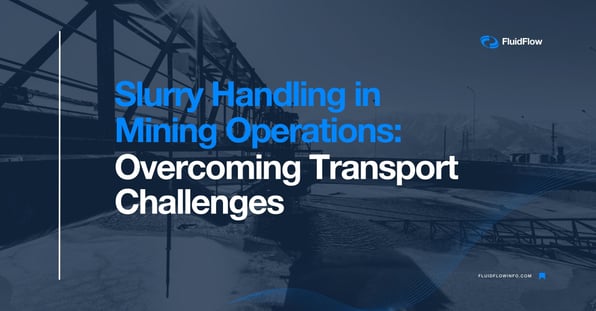3 Oct, 2023

Slurry Handling in Mining Operations: Overcoming Transport Challenges
Slurries play a central role in mining operations, finding application in processes like tailings pipelines, mineral concentrate handling, and hydro-transport systems. Yet, the challenges associated with accurately modeling and designing slurry handling systems demand careful consideration.
Settling and Deposition Headaches
A very small pipe size for the system can prevent slurry deposition. It does so in exchange for higher energy losses leading to inefficiencies and a very limited output.
On the other hand, a very large pipe size at some point can demonstrate an efficient system. However, it can lead to unwanted deposition of solids within the slurry handling system and cause unnecessary system downtime or lost production.
The three-dimensional interaction between the liquid, solid, and the surfaces exposed to the slurry flow is not simple to take into account when analyzing its behavior across a transport system. Hence, the need for more sophisticated software tools such as FluidFlow is very much pronounced for efficient slurry handling. The software applies industry-recognized and generally accepted empirical methods to tackle these challenges effectively.
 Figure 1. Mine tailings reservoir in Africa, receiving slurry through a pipeline from an ore processing plant.
Figure 1. Mine tailings reservoir in Africa, receiving slurry through a pipeline from an ore processing plant.
The Rheology Riddle
Apart from challenges posed by solids deposition across pipes, slurries exhibit intricate rheological behaviors. Unlike water, which has a constant viscosity at a certain temperature, liquid-solid mixtures demonstrate an irregular viscosity. Slurry is a non-Newtonian liquid that can be influenced by yield stress and may undergo “thinning” or “thickening” as exposed to varying amounts of shear.

Figure 2. Different types of non-Newtonian fluids.
Digging Into the Details
Thorough slurry characterization during the design phase is paramount to circumvent these problems. This involves gathering good laboratory data and meticulous analysis. Some of the data obtained from laboratory testing are:
- Particle size distribution
- Rheology data including the influence of yield stress
- Settling velocity
- Influence of slurry characteristics on pump performance
From the particle size distribution data and rheological properties, engineers can identify and select which empirical relationship will appropriately represent the slurry to effectively analyze its behavior for more efficient slurry handling. This can be done using FluidFlow as it utilizes widely recognized industry methods to evaluate slurry behavior across transport systems.
.png?width=1024&height=278&name=Database%20-%20LOAD%20or%20SAVE%20fluids1%20(2).png)
Figure 3. Tailings Systems.
In our next article, we’ll explore advanced software solutions that will help engineers handle slurry efficiently and reliably in mining. Stay tuned for an in-depth exploration of tips and insights aimed at optimizing slurry transport challenges.
Related Posts:
Slurry Piping Systems in Mining & Mineral Processing Industries - FluidFlow
The importance of accurate slurry rheology and slurry viscosity data

